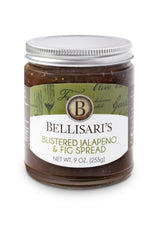
A juicy peach eaten right over the sink is sheer summer perfection. And yet, sometimes we're lucky to have so many that we need other ways to eat (and drink) them. Peak peach season in July and August for the sweet juicy fruit with its soft, fuzzy skin that ranges from white to rich yellow to reddish brown in color and flesh that ranges from yellow to deep gold and red. Peaches are a popular fruit used for many purposes, such as in desserts, pies, puddings, cobblers, shortcakes, salads, as breakfast toppings, for canning, and to just enjoy being eaten fresh out of the hand. And while these delicious fruits are fabulous to eat fresh, they’re also relatively easy to freeze for use later on.
Most often peaches are sold not by variety, though, but instead by the color of their flesh: white, yellow, or red. A white peach has a very similar flavor to the yellow peach, just a different color of flesh, while the red-fleshed peach is tarter in flavor. Dried peaches are also available in slices, diced pieces, and ground. They have a sweet tart flavor and are treated with sulfur dioxide to retain coloring.They can be eaten on their own or added to a variety of dishes.
Peaches are rich in many vitamins, minerals, and beneficial plant compounds. In addition, they’re packed with antioxidants. The fresher and riper the fruit, the more antioxidants it contains.Fresh and canned peaches seem to have similar amounts of vitamins and minerals — as long as canned varieties are unpeeled. However, fresh peaches have higher levels of antioxidants and appear to be more effective at protecting against oxidative damage than canned ones.
Freezing peaches is one of the easiest ways to preserve the flavors of summer. The freezing method also locks in the fresh peach flavors, so they’re ready to quickly thaw for use throughout the year.For best results, you’ll want to peel and slice your peaches prior to freezing. Eliminating any air from the bag will help keep freezer burn from forming. Slicing the peaches and tossing with lemon to prevent browning and a touch of sugar to bring out the juices will help aid in this process.
- Start with ripe peaches. These will feel a little heavier than an unripe peach and will give lightly to touch.
- Using the tip of a paring knife, cut a small X through the skin of the bottom of the peach, taking care to not cut deeply into the flesh.
- Place the peach in a pot of boiling water for 10-15 seconds.
- Remove from boiling water and place directly into an ice bath to stop the cooking process.
- Once cool, use a paring knife to catch the corner of skin at the base of the X and peel towards the stem. The skin will come right off!
- Once peeled, cut the peach in half, starting along the crease of the peach and running your knife all the way around.
- Twist the two halves to release one from the pit and then use the tip of a knife or spoon to pry the pit out from the remaining side.
- Slice each half into 4-8 wedges and place in a bowl.
- Toss the juice of 1 lemon and a ½ teaspoon of sugar for every 8-10 peaches added. The lemon juice will help prevent browning and the sugar will release juices from the peaches, helping prevent air pockets when freezing.
- After tossing with lemon and sugar, place in a gallon-sized zipper freezer bag.
- Once peaches are added to the bag, press the bag to release all air and seal.
- Place the bag on a small baking sheet or cutting board and flatten the bag of peaches before moving the board with peaches to a flat surface in the freezer. Once peaches are frozen, remove the board and store peaches in the freezer until needed. The flat bags will help you stack and store multiple bags, while taking up less room in a crowded freezer.
If you don’t intend to process them for freezing or canning, it is best to purchase only the quantity that will be consumed in a short time because peaches spoil easily. When buying, select fruit that is fragrant and that gives slightly to pressure. Avoid peaches with blemishes, bruises, or green coloring.
Ripe peaches can be stored in a refrigerator for up to 3 to 5 days. Remove from the refrigerator 30 minutes before eating to bring out the full flavor of the peach. Store unripe peaches at room temperature.
Tips:
- Prevent browning of fresh cut peaches by dipping fruit into a mixture of 1 cup water and 1 tablespoon lemon juice.
- One pound of peaches equals approximately 4 medium whole peaches, 2 cups peeled and sliced, or 1 1/2 cups puréed.
- Speed ripening of peaches by placing them in a paper bag with an apple and store at room temperature.
Not only does Bellisari’s offer a Harvest Ginger Peach Spread, but we also have a wide variety of peach recipes that incorporate the rest of our products!Check out our delicious recipes that contain peaches. There are so many ways to use them in both sweet and savory dishes. Happy peach season from all of us at Bellisari’s!






